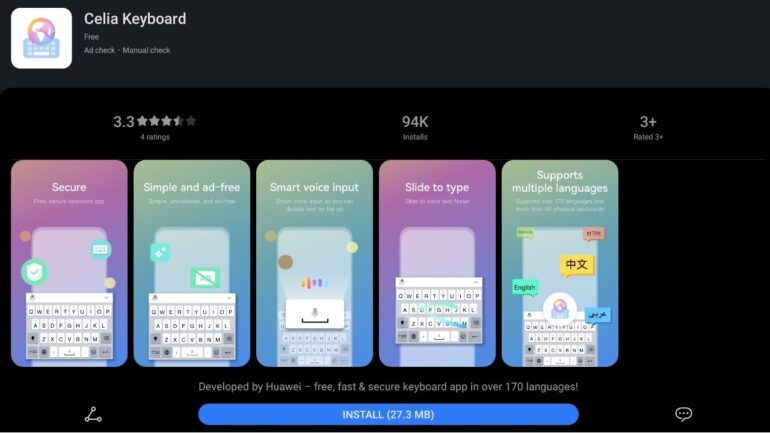TL;DR:
- Huawei updates Celia Keyboard with a Large Language Model (LLM) AI feature.
- The LLM-powered AI typing assistance is available in Celia Keyboard version 1.1.9.304.
- The update is limited to Huawei Mate 60 series and Mate X5 foldable smartphones.
- Additional features include customizable emoji icons, typing engine optimizations, and bug fixes.
- Huawei previously introduced LLM technology in its Celia voice assistant.
- The AI typing feature enhances typing suggestions and assistance for users.
- Expansion to other Huawei devices is a possibility in the near future.
Main AI News:
In a strategic move to enhance user experience, Huawei has introduced a groundbreaking update to its mobile keyboard app, Celia Keyboard. This latest development integrates a cutting-edge Large Language Model (LLM) AI feature aimed at revolutionizing the typing experience for Huawei device users.
The recent release, Celia Keyboard version 1.1.9.304, comes in a compact package size of 22.8 megabytes, ensuring seamless installation. The highlight of this update is the incorporation of an AI typing assistance feature powered by the state-of-the-art Pangu Large Model. It’s important to note that this remarkable feature is currently exclusive to Huawei Mate 60 series and Mate X5 foldable smartphones, setting these devices apart as pioneers in AI-driven typing technology.
But that’s not all – the new Celia Keyboard update doesn’t stop at AI enhancements. It also introduces a versatile toolbar featuring customizable emoji icons, providing users with an even more personalized and expressive way to communicate. Furthermore, the update includes significant typing engine optimizations and addresses any lingering bugs, ensuring a smooth and efficient typing experience.
This strategic move builds upon Huawei’s commitment to AI integration, as highlighted during the Huawei Developer Conference 2023. At the conference, Huawei unveiled the implementation of a large language model in its Celia voice assistant, opening up a world of possibilities for smart features within the assistant. This innovation enables the voice assistant to perform tasks such as writing on various subjects and enhancing smartphone functionality, offering a stark contrast to the non-LLM version of the voice assistant.
By extending the power of AI to the typing realm, Huawei aims to empower Celia Keyboard users with enhanced typing suggestions and assistance throughout their conversations, searches within their devices, and various other input-related activities. This leap in AI technology promises to elevate user productivity and convenience in ways previously unimagined.
While the LLM-powered AI typing assistance feature is currently exclusive to the top-tier Huawei models, there’s reason to be optimistic about its wider availability in the near future. Huawei’s dedication to innovation and user-centric design suggests that this transformative typing experience may soon find its way into an even broader range of Huawei devices, reshaping the future of mobile typing.
Conclusion:
Huawei’s introduction of the LLM-powered AI typing feature in Celia Keyboard positions the company as a pioneer in AI-driven typing technology. This move signifies Huawei’s dedication to enhancing user experiences and productivity. It also reflects the company’s commitment to integrating AI across its product ecosystem, which could potentially reshape the market by setting new standards for mobile typing efficiency and convenience. Competitors may need to follow suit to remain competitive in this evolving landscape.

